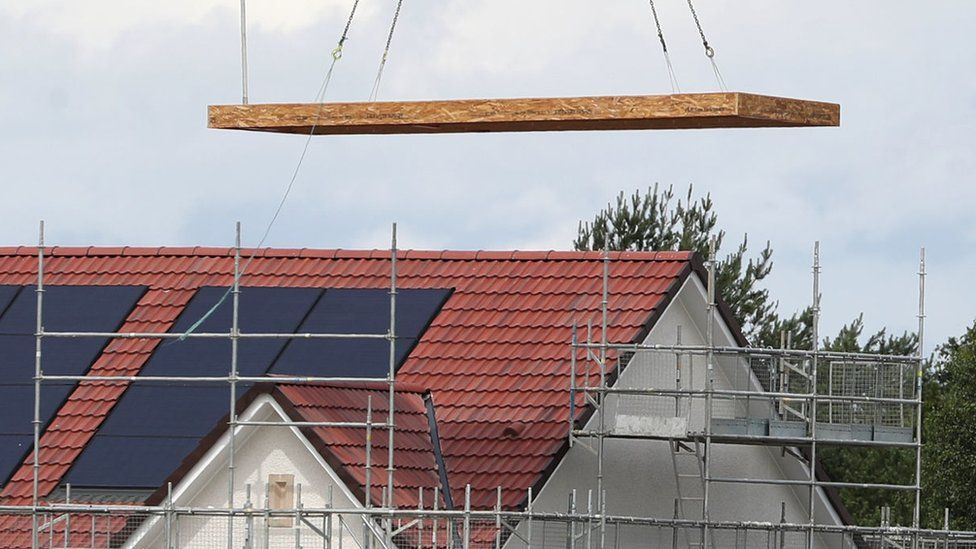Building strategy to look at embodied carbon, says government
- Published

The government is looking at how to tackle "embodied carbon" as part of an upcoming building strategy.
Developers may have won praise in the past for demolishing draughty buildings for energy-efficient replacements.
But engineers now say existing buildings should be kept standing due to the amount of carbon emitted when original building materials were made - known as embodied carbon.
A government spokeswoman said they were working on this issue.
And Business minister Lord Callanan told a recent conference that it was "one of the areas we want to look at".
But despite the peer saying the government was in "the final stages" of creating its new heat and building strategy, neither gave more detail about what measures may appear.
Making steel, concrete and bricks for buildings creates a lot of carbon, with concrete alone causing 8% of global emissions.
As a result, climate experts are urging ministers to make it hard for developers to demolish buildings without first exploring ways to refurbish and extend them.
The chairman of the government’s advisory climate change committee, Lord Deben, said the government had been slow to accept this reversal of established thinking and ministers had not had "the will and the clout to develop these policies".
“We need to think differently," he said. "It’s not acceptable to pull buildings down like this. We have to learn to make do and mend."
Lord Deben said there needed to be a planning law to stop giving permission for demolitions, adding: "We are simply not going to win the battle against climate change unless we fight on every front."
Lord Callanan told a recent conference run by Property Week: “We’re in the final stages of building our Heat and Building Strategy at the moment. This is one of the areas we want to look at."
Experts said one simple step would be to make firms planning large scale developments to calculate the total impact on the climate before starting work - something that is already mandatory in several countries.
But it is not yet clear how far ministers will go, partly because the issue is relatively new to Whitehall.
The problem is huge but barely discussed, with the built environment creating 27% of the UK’s emissions.
The engineering giant Arup calculated around 50% of the whole-life emissions of a building could come from the carbon emitted during construction and demolition.
And this proportion will only grow as buildings are increasingly cooled and heated using low-carbon electricity – shifting more of the carbon burden on to the construction process.
The government itself has been embroiled in a row about the embodied emissions that will be created in the construction of a new “Justice Quarter”, combining courts and a police headquarters in London’s Fleet Street.
The Architects’ Journal, which has been campaigning on the issue, urged ministers to insist that the existing buildings are refurbished, rather than demolished.
The journal has calculated that the difference between expanding the old buildings and replacing them amounts to 19,180 tonnes of CO2 – that’s the equivalent of 4,171 passenger cars driven for a year.
The Ministry of Justice - which oversees the Courts and Tribunals Service - told the journal it was a matter for the City of London, as it was developing the site.
A government spokeswoman told BBC News that embodied carbon was "an issue and one that we have been working on addressing for some time”.
She said the government was already supporting a number of construction projects that aimed to reduce carbon emissions, improving supply chains, and software for simultaneous cost and carbon modelling.
But she declined to comment further in advance of the coming heat and buildings strategy.
The chief executive of the UK Green Building Council, Julie Hirigoyen, said it was "very good news that ministers are at last looking at this".
She told BBC News: “We really must come to grips with the issue of embodied carbon in buildings – we’ll never hit our climate targets unless we do."
Follow Roger Harrabin on Twitter @rharrabin.